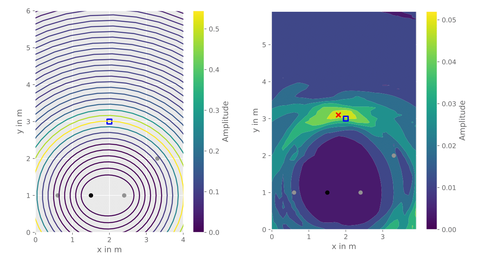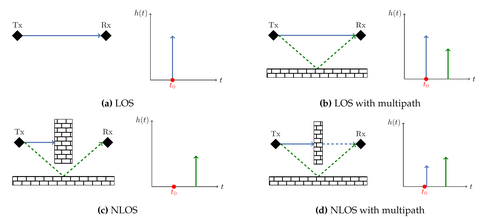Apr 26, 2021
Journal Article about Lab-Based Evaluation of Device-Free Passive Localization Using Multipath Channel Information

Environmental mapping method based on the Channel Impulse Response raw data and an elliptical model
The emerge of smart and networked devices and sensors is a massive trend in our today’s society. In addition to the informational interconnection, the interpretation of the physical properties of communication signals allows the extraction of geometric relationships between sensors. Besides established active positioning approaches, where all objects or persons have to wear active transponders, device-free passive localization opens novel potentials for a variety of applications. Furthermore, the multiple use of wireless signals leads to efficient and hybrid telematics systems.
This is achieved by monitoring changes in the received physical signal within the communication channel, for example using multipath information of the channel. This involves evaluating the time-delayed signal components caused by reflections at the target object (see Figure 1). This approach is comparable to radar-like systems.

Figure 1: Signal propagation in different propagation scenarios as well as the resulting Channel Impulse Response (qualitative)
Signal propagation in different propagation scenarios as well as the resulting Channel Impulse Response (qualitative)
In our conducted work, we design a method for ambient reconstruction based on channel impulse response and compare it with other known methods for passive localization.
For this purpose, a commercially available Ultra-wideband localization system is used to validate the developed method. The obtained raw signal data is thereby used to create a heat map of the propagation environment (see Figure 2).

Figure 2: Environmental mapping method based on the Channel Impulse Response raw data and an elliptical model
To investigate and validate possible influencing variables, different constellations and objects are examined in the reconstructable environment of the professorship's anechoic chamber.
In summary, our journal article Lab-Based Evaluation of Device-Free Passive Localization Using Multipath Channel Information presents a proof-of-concept of passive object detection and environment reconstruction based on pure communication signals, which are used in parallel for data exchange. Thereby, the presented approach can be integrated into already installed wireless sensor networks without additional hardware efforts.
Especially with regard to current trends in wireless communication (e.g. 5G/6G or light-based communication) and the associated development of wider frequency bands, such remote sensing approaches can significantly and sustainably change telematics systems. New application areas in future mobility systems, such as the connected aircraft cabin smart parking or in logistics open up.
